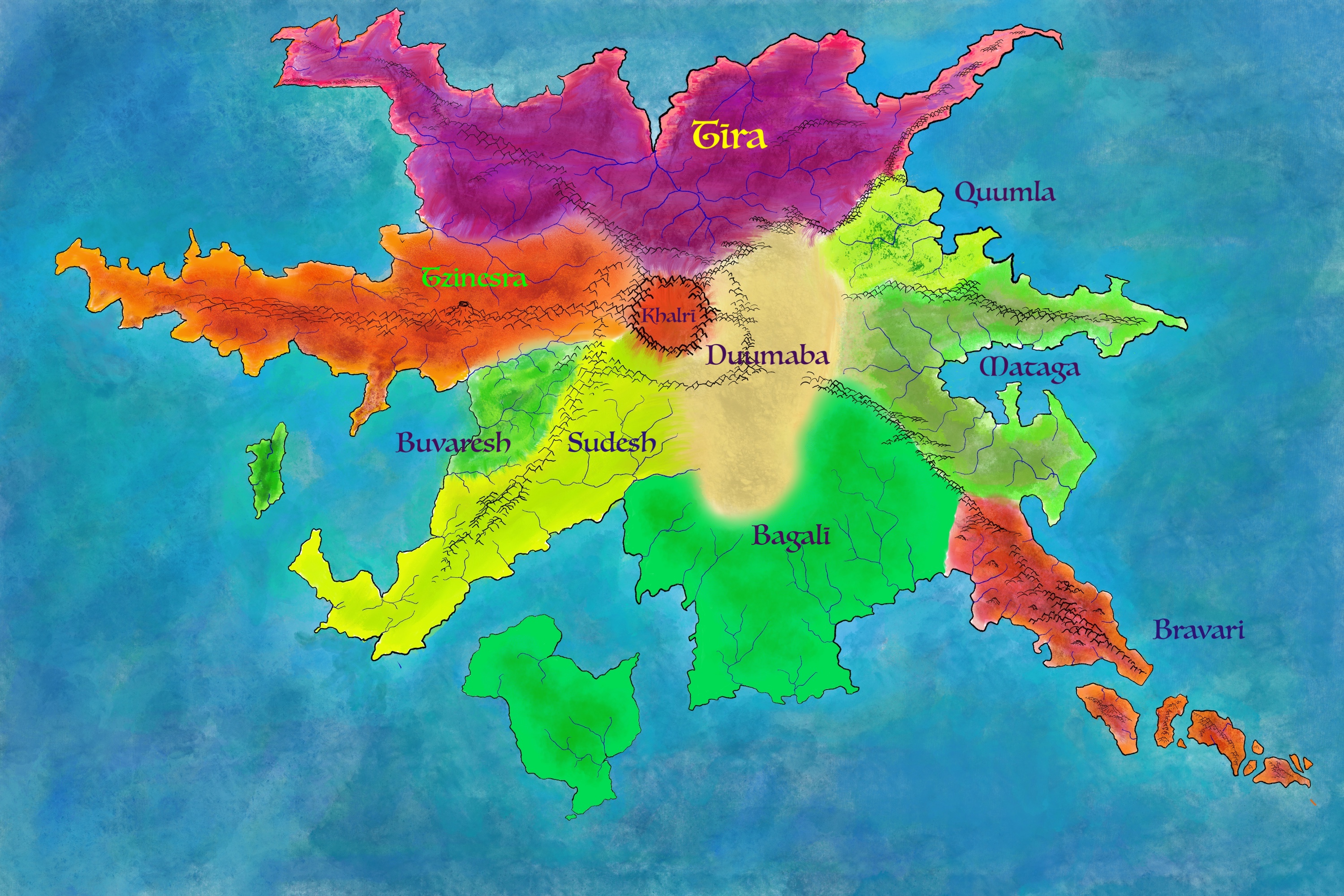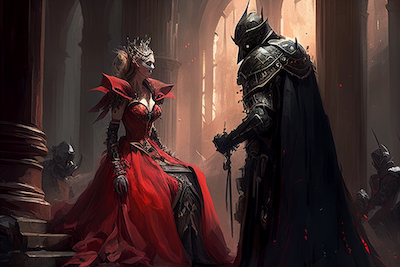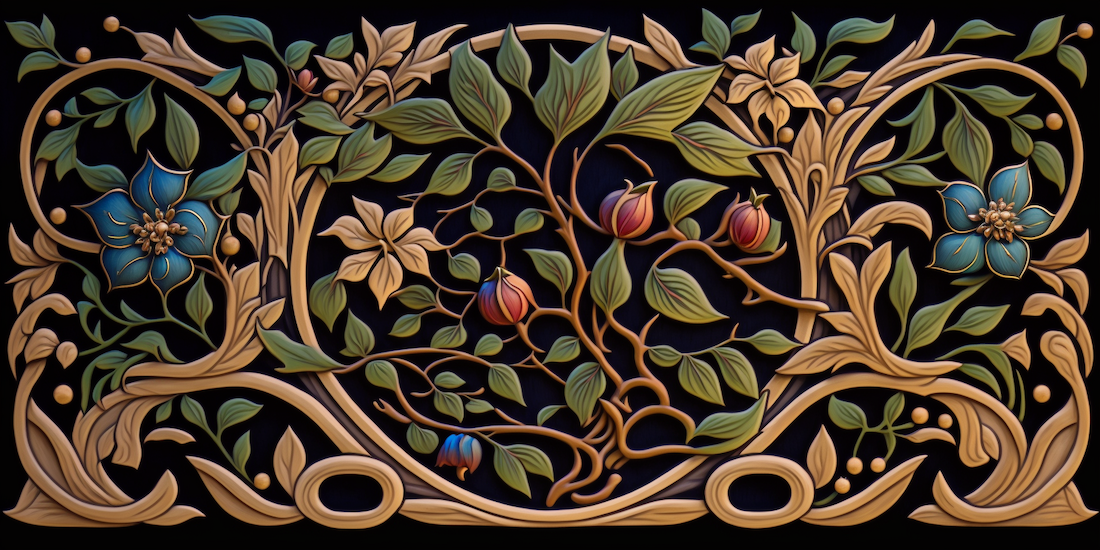The world of the Ten Queendoms is rich with many deities, demi-gods, supernatural beings, demons, spirits, and the like. But each of the Ten Queendoms is devoted to a Goddess, and as the land and its people are ruled by queens, so is the world itself governed by the Goddesses.
These are not your sugar-and-spice Goddesses. These are fierce, fiery, bloody Goddesses. Some are beautiful, and others terrifying in appearance. It is said that all are the different manifestations of one transcendent unknowable divinity. Each of the ten is rumored to be wife to the great lord Sība, who himself is unknowable, and it is said that all the world is nothing more than the dream of this infinite consciousness, and even Sība and the Ten Goddesses, as beyond all human understanding as they are, themselves are but more dreams of that which is beyond.

Of Goddesses and Lands
Khalrī - The Goddess of Time itself. She is all black, blacker than any shadow, than the blackness of the black between the stars. She is the greatest of the Goddesses, and the hardest to comprehend. Terror precedes her, and yet the gaze of her crystal-green eyes fills with peace and bliss. Khalrī is first among the Goddesses, and her land is at the center of the Queendoms. Although in theory there is no hierarchy among the Queendoms, the Queen of Khalrī maintains lines of influence and control through all the lands.
The land is a peaceful, pastoral high valley, surrounded by mountains on all sides, with good roads to each of the Queendoms. The City -- and The Palace -- are in a deep circular valley at the center of the Queendom. The City is the largest in the Queendoms. Every faction with any aspirations at all has a presence here.
More about Khalrī
Tīra - The Goddess of Wrath and Demonkind. Tīra is Goddess of the dark arts, of treachery, sorcery, and will. At the same time, she abhors any slavery or use of power to control another. Like all the ten, she transcends "alignment" and scholars say that she has no enmity to any living being.
But her land is a terrifying one, and a constant source of trouble to other Queendoms. The land is often at war with itself, sometimes with two, three or more “Queens” vying for supremacy; and it is just as often at war with its neighbors.
The current queen is generally the one who can command the largest army, or most powerful alliance of demons.
More about Tīra
Sudesh - In the appearance of an exquisitely beautiful young woman, she is Goddess of celebration of life.
Her land is a profusion of new life, new forms of life. It is unstable, with new varieties of all living things appearing with each generation. There is almost no such thing as a "human" -- all beings have variations and unexpected powers, abilities, and appearances. The great capital of quartz, marble, coral, and living wood is almost a living creature in its own right.
The queen selected as the most beautiful 16 year old girl, and she reigns for six years, with absolutely unfettered power. The nature of life in Sudesh can vary widely based on the caprice of the current queen. Sudesh has a unique selection process: the 100 eldest males of the queendom are the judges of this beauty contest, and as her first act, the new queen must personally kill all 100 men in the manner of her choosing.
More about Sudesh
Buvaresh - Goddess of earth and sky and heaven, the three-eyed one. Hauntingly beautiful, skin bright as champagne in sunlight. Sometimes called the Queen of Heaven, spirits of all kinds serve her.
Her land is a wild mix of humans, non-humans, wild creatures, demons, and demigods. This is a land of faerie and wild, beautiful magics. There is almost no urban center at all: networks of small villages through forest, jungle, hill, and moor each have their own lore. All are welcome, here, and Buvaresh is often a destination for those whose ambitions have faltered in other realms; but the citizens of Buvaresh resist all forces of centralization or control.
The Queen is always a druid of the very highest accomplishment, chosen by a secret council. All that is known of the council is that it is both druid and fae.
More about Buvaresh
Bravari - The terrifying one; goddess of pure power. She glows with the color of molten steel. Fire and lightning flow from her, and her gaze can set stone on fire.
Her land is unstable with earthquakes and volcanos separating pockets of stable ground. People survive and thrive here even so, a land of great warriors, sorcerers, and exotic races. Travel between cities is most commonly done by magical means, and sometimes to other realms also. Bravari is the only realm to sanction exchange with parallel material planes.
The queen is the most powerful sorceress in the land, and holds her power so long as that remains true, by test of arcane combat.
More about Bravari
Tzinesra - Goddess of mystery. The headless one -- she is invariably portrayed carrying her head in her hand while gouts of light flow from her bloody neck; but she is the most commonly encountered of the ten goddesses, and is usually encountered with her head attached. She is revered as the most compassionate of all Goddesses, and those seeking transcendent understanding believe she is the gateway to immortality.

Her land is wild and dangerous, overrun with supernatural beings, a home to demigods. The cities are mad with power. Magic of all sorts works more strongly here. But the great compassion of the Goddess flows through all: although few mortals are not in service (or sometimes in thrall) to the great and powerful beings here, that power runs to all citizens.
The Queen is hand-picked by the Goddess based on criteria that have eluded scholarly understanding, and rules for exactly 33,000 days. During this time, she is apparently immortal, and at the end of this time, she is never seen again. The transitions are a wild party, with the Goddess in attendance.
More about Tzinesra
Duumaba - Goddess of death, destruction, and tragedy. She is the most ancient of all Goddesses, a withered crone. She is also the Goddess of profound freedom. It is said after all passes away, only Duumaba will remain.
Her land is a desert filled with snakes and scorpions and vicious monsters of every description. Not generally considered a thriving land, but there are fabulously rich dwarven courts deep beneath the desert: for the land is rich with an incredible profusion of minerals, precious gems, and rare metals. This is the “common” court, where dwarves and other artisans create amazing things. There is also a far more mysterious court ruled by the Kenku queen. The mineral wealth and creations of the dwarves are in demand throughout the realms, with vibrant trade bringing in all the supplies the land does not offer. As for the Kenku, they are mistrusted, and the ways of the Queen’s court inscrutable. (Kenku assassins, however, are renowned throughout the realms – it is no secret how the Queen maintains her position.)
The Kenku queen is thought to be chosen by a large parliament, but little more is known.
More about Duumaba
Bagalī - Goddess of silence and stillness, enemy of demons. She is radiant gold, and holds absolute power over all of demonkind, who are terrified of her.
Her land is lush and quiet; the most stable of all the queendoms. This is a quiet and pastoral land with eighteen generations of long-lived and peaceful Queens. Disturbances are not tolerated. The sciences of light thrive here, and are much in-demand from other queendoms, as a Bagalī-trained demon hunter can command her price throughout the realms. Bagalī has some of the richest and most fertile land, and the high hills are known for their matchless wines.
Behind these pastoral appearances, it is rumored that the courts of Bagalī have some of the most subtle, yet vicious, political intrigues of all the Queendoms.
The Queen of Bagalī is a hereditary role, always of pure Aasimar, and rules lightly over an ever-shifting court of nobles, courtiers, scholars, and priestesses.
More about Bagalī
Mataga - Goddess of knowledge, science, study, learning, skill, accomplishment. But she is also an outcast, and requires her closest servants to eat rotten foods and drink to excess. She is beautiful, and moss-green.
Her land is a beautiful wilderness, sprinkled with cities, each of which has grown around a university devoted to a different study. The scholars of Mataga travel and study all the Queendoms, and advise to all courts and factions, and maintain schools across the Ten Queendoms. Vedalken dominate here, but elves (especially drow) are ubiquitous.
The Queen is chosen by the Council of Provosts, the nine leaders of the nine great universities. She serves for nine years, and may be re-chosen, either in succession or not, but rarely has a queen requested that burden. The provosts may choose one of their own. In recorded memory the Queen has almost always been Vedalken. One Drow queen, the greatest scholar of interdimensional theory, ruled over a glorious golden age of 189 years.
More about Mataga
Quumla - Goddess of beauty, abundance, pleasure. She is gracious and beneficent, but deals cruelly with insincerity. Can be capricious.
Her land is beautiful, orderly, but prone to violent storms. Quumla is known for endless intrigues and factions, many of which spill over into other Queendoms. This is the only land where humans are most populous, and the more exotic races might raise eyebrows. Quumla is rich with all staples and maintains a carefully regulated trade with the other queendoms, the breadbox of the realms.
Quumla’s queen is a hand-picked successor, usually human, sometimes elf, never related to the outgoing queen. If a queen dies without a successor, then the high council chooses a replacement, with the only limitations: she must be native to Quumla’s realm, she must be dedicated to Quumla, and she cannot be a member of the council.
More about Quumla
